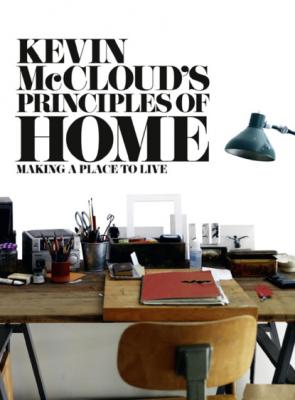Kevin McCloud’s Principles of Home: Making a Place to Live. Kevin McCloud
Читать онлайн.| Название | Kevin McCloud’s Principles of Home: Making a Place to Live |
|---|---|
| Автор произведения | Kevin McCloud |
| Жанр | |
| Серия | |
| Издательство | |
| Год выпуска | 0 |
| isbn | 9780007458318 |
(Red Cover/Photoshot/Photolibrary)
(photographer, Martin Morrell/interior design & styling, Jacqueline Morabito – www.jacquelinemorabito.com)
Written in memory of my father
Donald McCloud, Engineer
CONTENTS
13 THINGS AT HOME WORTH INVESTING IN
14 THINGS AT HOME NOT WORTH INVESTING IN
This book is something of a manifesto for how we can live. It’s a manifesto for a way of living that, in comparison with life of the last 60 years, could be slower, more enjoyable, gentler and altogether less taxing on the resources of this planet. It calls for a new appreciation of the human effort and energy that go into designing and making everything around us, from a spoon to a car, from a house to a city, from a dam to a cathedral. It calls for a re-evaluation of materials and fuel energy, and it calls for a culture in which we share much more of what we have in order that we don’t squander it.
I think we have lost touch with the made world. We have forgotten how difficult and time consuming it is to make something; how hard it is to make an elegant table out of a tree or a spoon out of metals dug out of the ground and refined. Our sensibilities to craftsmanship have been eroded by high-quality machine manufacturing; our tactile sense has been debased by artificial materials pretending to be something that they are not. Our attention, meanwhile, has been diverted by the virtual built worlds that exist inside screens. The landscapes of gaming and avatar worlds, for instance, are not complicated by the inconvenient messiness of the real world. In them, stuff, narratives, buildings and people are both perfect and disposable.
The real world is not perfect and it’s not disposable. In the real world, things and people age and decompose. The real, tangible world is much harder to make, more difficult to maintain and unpleasant to recycle. Which may explain why so many people seek solace in virtual worlds, even if it’s just by watching a soap opera on TV.
My Big Point is that I find the real world, which man has shaped, layered and renewed over thousands of years, more exciting and energizing – despite its grime – than any 3-D movie effect. Watching the Brooklyn Bridge explode in a computer-animated sequence may be awesome, but it is never as awe-inspiring as standing underneath the real thing and wondering how men managed to make it. Awesome is loud but awe is quiet.
I’m aware that my manifesto is motivated by a passionate love for places, buildings and things, not as objects that I want for myself to keep but as examples of human brilliance and creativity, the experience of which I want to share. I’m also frustrated, having worked as a designer and maker, by how little craftsmanship and the sweat of labour are appreciated nowadays. How we all assume that everything around us is made by machines and computers, whereas the truth is that your dinner plate was probably made by just three people in Portugal who spent four months of their lives producing a range for a high-street retailer; and your mobile phone was assembled by one person over a morning of their life.
So I’m writing out of a passionate love for the built environment and a quiet
